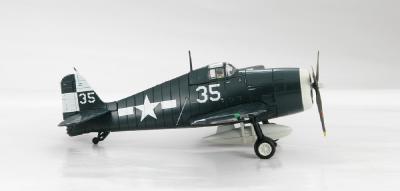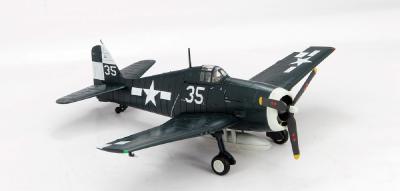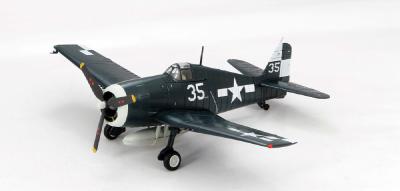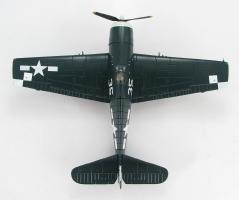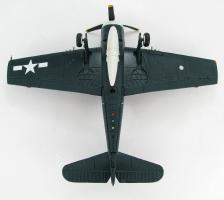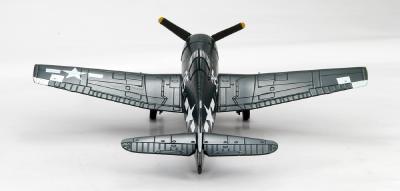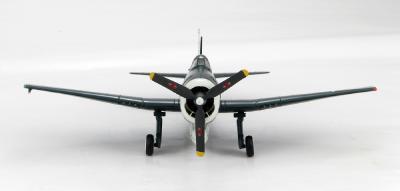Hobby Master Archive
Air Power Propellers 1/72
F6F
F6F-5 Hellcat VF-17 "Jolly Rogers", USS Hornet (CV-12) 1945
Hobby Master 1/72 Air Power Series HA1110 Grumman F6F-5 Hellcat, VF-17 “Jolly Rogers” USS Hornet (CV-12) 1945
Die-cast metal.
Superb detailing in 1/72 scale.
Pre-painted with pad applied markings.
Comes with pilot figure.
Fully assembled.
Display stand included.
Option to display model with wheels up or down.
Minimum use of plastic.
Very collectable.
THESE PICTURES ARE PRE-PRODUCTION NOT THE FINAL PRODUCT
On April 4, 1944 the new F6F-5 took to the air. It was a much improved version of the F4F Wildcat. The designers gave the new plane a redesigned engine cowl for the engine that was now water-injected. The injection increased take off performance by 10% and increased the armament capabilities. Production of the F6F-5 lasted until November 1945 when Grumman had rolled out more than 900 “5"s. The UK received some of these aircraft under the Lend-Lease Act and they were designated Hellcat Mk. II. This plane was so lethal that it earned the nickname “Ace Maker” because of the large number of pilots that earned their 5 + victories while flying it.
The Jolly Rogers began during World War II as Fighter Squadron 17 (VF-17) on January 1, 1943. The squadron was one of the first navy squadrons to fly the Vought F4U Corsair fighter. Because their plane was called Corsair, VF-17’s men wanted a squadron name that would correspond with that pirate theme. They came up with the now-famous black flag with white skull and crossbones symbol and decided on the name Jolly Rogers. The Jolly Rogers painted their new logo on the sides of the engine cowling, not under the cockpit as tradition called for, so it wouldn’t clutter up the fuselage where their kill markings would later be painted. Thus, the legend was born. In October 1943 VF-17 was made a land based squadron because they still flew the Corsair and the safety of these planes carrier operations was in question. April 10, 1944 the original VF-17 stands down and the CO is re-assigned. Under a new CO VF-17 began its second tour but this time on aboard USS Hornet and flying the F6F Hellcat. They first flew the F6F on strikes against Tokyo on February 16 1945. On March 18, 1945 over Kanoya and April 16, 1945 near Okinawa the Jolly Rogers scored 31 victories each day. VF-17 managed to score a total of 161 victories and made 12 aces while flying the Hellcat. The combined score for both tours brought the total to 313 narrowly beating the single deployment record of 30 held by VF-15.
Specifications (F6F-5):
Engine: 2000hp Pratt & Whitney R-2800-10W Double Wasp 18-cylinder radial piston engine Weight: Empty - 9150 lbs., Max Takeoff - 15,410 lbs.
Dimensions: Wing Span - 42ft. 10in. Length - 33ft. 7in. Height - 13ft. 6in.
Performance: Maximum Speed at 23,500 ft - 380mph Cruising Speed at 6,000 ft - 168mph Ceiling - 37,300 ft Range - 1,530 miles with 150-gallon drop tank Armament: 6 X 12.7mm (0.5 inch) wing-mounted machine guns 2 X 1,000-lb bombs, or six 127mm (5-inch) rockets
| Added to archive | 2015-11-19 |
| Last modified | 2015-11-19 |
